Days of Detente
By Erick Wang
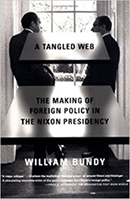
Jussi Hanhimaki
Jussi Hanhimaki is a professor of international history at the Graduate Institute of International and Development Studies in Geneva, Switzerland. He specializes in the history of the Cold War as well as American foreign policy and transatlantic relations. As a professor, he was named Finland Distinguished Professor by the Academy of Finland in 2006.
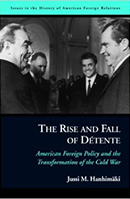
Jussi Hanhimaki begins his book The Rise and Fall of Détente: American Foreign Policy and the Transformation of the Cold War with a clear warning: “It is important to note that ‘détente’ – much like the ‘Cold War’ – is a term that defies easy definition or periodization. There was no official declaration of détente, no official starting point, no clear-cut end. [Hanhimaki has] chosen, perhaps rather conventionally, the early 1960s… as the time when the Soviet-American relationship began its gradual evolution toward the ‘golden era’ of the early 1970’s.”1 Having cautioned readers, Hanhimaki then strives to help them navigate the murky period of Soviet-American negotiations known as détente. By recounting the events of American foreign policy between Kennedy’s presidency and the election of Ronald Reagan in 1980, Hanhimaki aims to document the beginnings of peace between the U.S. and the USSR, the climax of détente during the final years of Nixon’s presidency, and the demise of peace negotiations beginning with the Watergate Scandal, as well as explain the impact that détente had overall on the outcome of the Cold War.
Hanhimaki uses the first few chapters of the book to explain the beginning of negotiations between America and the USSR. He stresses that Nixon did not begin détente and that instead, détente had begun in the mid-1960s, and was mostly in accordance with what American citizens had wanted. Hanhimaki emphasizes that, “this was particularly the case as no one in the 1960s could see, or offer, a road map to victory. As it matured, the Cold War appeared increasingly ‘normal.’ And if it were here to stay, then it was high time to reduce the dangers the Cold War had produced by taking steps toward a more predictable world order in which the possibility of a thermonuclear war could also be contained.”2 Hanhimaki explains that, though Kennedy (and later Johnson) took initiatives to negotiate with the Soviet Union, their efforts failed to produce the effective results that Nixon later achieved. However, Hanhimaki warns readers that they undoubtedly contributed to the negotiations effort, even asserting that, “in fact, Johnson had come tantalizingly close to making a visit to the USSR in his last year as president.”3
In the next few chapters, Hanhimaki outlines the steps Nixon and his National Security Advisor Henry Kissinger took in order to reduce violence with foreign countries while trying to maintain order in the domestic front. For example, as opposition to the Vietnam War grew in the American public, Nixon was forced to sign a stalemate with the Vietnamese forces. However, as Kissinger noted, “if the endgame was not handled properly, Vietnam could undermine American credibility in its dealings with foe and friend alike,” and “to accept defeat would thus imply that U.S. foreign policy since 1945 had in fact been based on false assumptions.”4 In order to avoid losing credibility, Nixon negotiated for American withdrawal of troops from Vietnam while promising to maintain its support through material aid. As Hanhimaki points out, “although the antiwar critics would not charge that Nixon was simply continuing the war effort as before, because the withdrawals were coupled with increased U.S. aid, the hawks would find it difficult to accuse Nixon of abandoning an ally.”5 Through examples such as the “ending” of the Vietnam War, Hanhimaki demonstrates the techniques Nixon and Kissinger employed in order to keep peace at home and abroad.
After outlining Nixon and Kissinger’s accomplishments toward achieving peace, Hanhimaki follows the demise of détente beginning with the Watergate Scandal. Hanhimaki notes that although Watergate was not the only event responsible for the fall of détente, it was crucial, as “Nixon’s obvious political weakness emboldened congressional opponents to challenge the administration more openly.”6 Political opponents argued that Nixon’s lack of respect for domestic law could quite possibly have infected the foreign policies that he created too, all but ending his effort in negotiating with the Soviet Union. Nixon’s successors, namely Ford and Carter, met great difficulty in continuing negotiations. For example, the war between Ethiopia and Somalia turned public opinion against détente. The USSR believed that, with the aid of Soviet advisors and Cuban troops, Ethiopia could be a shining example of how Socialism could flourish even in Africa. As Hanhimaki notes, however, “many in Washington came to see the conflict in the horn of Africa as a severe blow to superpower détente. Even as Carter flew to Vienna to meet with General Secretary Brezhnev and sign the Salt II Agreement in June 1979, détente was in deep trouble.”7 The differences between America’s goals and the Soviet Union’s goals made negotiating increasingly hard to justify. Hanhimaki marks the election of Ronald Reagan in 1980 as the official end to détente policy in America. In a speech to the world on January 20, 1981, Reagan declares that, “‘as for the enemies of freedom, those who are potential adversaries, they will be reminded that peace is the highest aspiration of the American people. [America] will not negotiate for it, sacrifice for it; [America] will not surrender for it, now or ever.’”8 By instilling a sense of moral certainty in the people, Reagan won support for more belligerent foreign policy, formally ending compromise with the USSR and starting the “Second” Cold War.
In the final chapter of the book, Hanhimaki discusses how the results of détente affected the Cold War overall. He first presents the two prevailing arguments that most historians take today. The first is that, through summits and negotiations, the USSR was allowed to do much more than previously while the U.S. gained little to nothing toward its goal in achieving piece, thus prolonging the Cold War. The second argument is that the human rights provisions attained through détente led to the inevitable revolts within the Soviet Bloc, effectively ending the Cold War. Hanhimaki declares that neither argument is completely correct, declaring that, “negotiating with the United States… simultaneously added to Moscow’s international legitimacy and undermined the USSR’s role as the leading force of global revolution,” and “at the same time, it takes a certain leap of faith to accept the idea that the human rights provisions of Basket III of the 1975 Commission on Security and Cooperation in Europe spurred an unstoppable transnational movement that tore down a host of repressive regimes possessing well-tested tools of internal oppression.”9 Further, Hanhimaki states that détente was simply a different method in achieving the same goals that both previous and future presidents had in mind, as, “containing the Soviet Union remained the central goal of U.S. foreign policy.”10 Hanhimaki finishes his work by presenting readers with two results of détente that are still relevant today: the development of an open relationship with China, as well as the creation of human rights provisions. With these, Hanhimaki reminds readers that they live in a world still influenced by the policies of détente.
Hanhimaki makes several points in his work. The first of these is that, though it seemed radically different, détente was largely a continuation of past goals, though in a different manner. He presents the movement as a conservative policy aimed at stabilizing the world during the Cold War era when no viable solutions seemed to exist. Hanhimaki’s second point is that, though détente provided some spectacular breakthroughs, such as the opening to China, in the end it lacked respect from both the domestic and international fronts alike. Internal discontent (brought about largely through the Watergate Scandal) as well as differing opinions between the U.S. and the USSR led to the eventual failure and demise of détente. Hanhimaki’s final point is that, though détente was meant to provide security for the citizens of the world and prevent nuclear warfare, the policies it brought about, such as the human rights provisions of Basket III undermined that goal, stating that, “détente ultimately – ironically – discredited the international system it was meant to stabilize”.11 By contributing to the eventual downfall of the Soviet Union, détente also took down the global system that is was meant to stabilize. Through his work, Hanhimaki provides readers with a thorough summary of the process of détente and the effects it brought about in the world.
Hanhimaki is a professor of international history at the Graduate Institute of International and Development Studies in Geneva, Switzerland. He specializes in the history of the Cold War as well as American foreign policy and transatlantic relations and, prior to The Rise and Fall of Détente, published numerous works pertaining to these topics, such as Transatlantic Relations Since 1945, The Flawed Architect: Henry Kissinger and American Foreign Policy, and The Cold War: A History in Documents and Eyewitness Accounts, demonstrating his immense knowledge. As a professor, he has received much acclaim from his academic peers, and, having been educated in some of the world’s best institutes, such as Boston University and Harvard University, was in 2006, “named [a] Finland Distinguished Professor by the Academy of Finland.”12 As a professor on the era when détente was put in place, Hanhimaki probably noticed how few people truly understood the ideas behind it and the results it produced. The uncertainty on the subject of détente probably served as the primary motive for Hanhimaki to write this book. As an author of Finnish origin, Hanhimaki remains relatively neutral on the topic of American foreign policy, as evidenced through his assertion that neither of the prevailing conclusions regarding the results of détente are completely correct. Finishing his work in 2013, he undoubtedly faced the struggle that present day historians face in determining the exact nature and effects of détente, a fact which is clearly shown through his willingness to accept multiple views on the topic.
The Global Policy Journal believes The Rise and Fall of Détente to be an engaging analysis that helps fill what used to be a hole in the history of American foreign policy. In his critical review, Paulo Volpato, one of the editors, declares that “In these pages, readers will mostly find a competent but not very critical exposition of the various initiatives, treaties, secret trips and difficult negotiations which characterized the period, written in a clear and precise prose.”13 Because of the informational nature of Hanhimaki’s book, Volpato sees it as a stepping stone for readers who want to move on to a more interpretive work. He finishes his review by saying that, “students willing to delve into this literature will find in Hanhimäki’s book a useful and clear general map. Readers wanting to familiarize themselves with the topic of détente would do well to start from here. The book however has less to offer those with a good background on the relevant period.”14
Andrew Preston, senior lecturer in history at Cambridge University, also reviewed The Rise and Fall of Détente. In his assessment, Preston emphasizes how, though “Détente shaped a hugely important era in Cold War international history… it remains poorly understood.”15 Furthermore, Preston highlights how Hanhimaki documents détente beginning from Kennedy’s presidency instead of only focusing on the usual combination of Nixon and Kissinger, and in doing so provides a more complete guide on détente than other books do. Preston is clearly impressed with the extremely thorough nature of Hanhimaki’s work, finishing his review by calling it “an invaluable addition to the literature on the Cold War.”16
Hanhimaki’s book is significantly helpful in getting readers acquainted with the subject of détente. His work provides an extremely thorough account of American foreign policy with regard to the USSR and gives readers ample knowledge on the time period between Kennedy and Reagan. Furthermore, Hanhimaki’s simple yet precise writing style helps readers understand his message without confusing them with higher-level, often didactic words and sentence structure found in other historians’ writing. However, as stated in the Global Policy Journal critical review by Volpato, Hanhimaki’s work is “not very critical.”17 Despite being very complete information-wise, it leaves readers to determine for themselves the results détente had on the Cold War era. Though further research may be required in order for readers to develop their own views on the policies of détente, Hanhimaki’s work still provides an excellent starting point and equips readers with the background knowledge needed for said research.
Hanhimaki presents the 1970s as a time of turbulence in the United States. Though America experienced a “golden era” in which negotiations with the Soviet Union were very much successful, the latter part of the decade did not achieve as much. Beginning with the Watergate Scandal in 1972, American foreign policy, specifically détente, started to spiral downwards. Increasingly different ideals between the two superpowers of the world caused a spike in tension, causing what some called the Second Cold War by the late 70s. By the election of Ronald Reagan in 1980, many began to worry, just as KGB Chief Yuri Andropov had, that “‘new administration in Washington [was] trying to push the whole development of international relations on to a dangerous path.’”18 Though America held its fair share of accomplishments, Hanhimaki confirms that the 70s were indeed a period of severe crises in America.
Though the 70s were filled with foreign policy problems, Hanhimaki adamantly asserts that they were very much a continuation of the 60s. He proclaims very early in the book that, “détente was, essentially, a conservative policy, aimed at stabilizing a situation that was (particularly because of the Vietnam War, the escalation of the nuclear arms race, and the breakdown of the domestic consensus over U.S. foreign policy) threatening the proper functioning of American foreign policy.”19 Later in the book, Hanhimaki claims that, “broadly speaking, the Nixon-Kissinger strategy of détente – the search for a structure of peace – basically amounted to a new method of fighting the ultimately irreconcilable struggle against Moscow. Acknowledging that they could not – in the domestic and international circumstances of the late 1960s – seriously contemplate the large-scale use of American military force to pursue such goals, the American architects of détente gravitated toward a different set of methods.”20 Though the methods were different, détente was employed in order to reach the goal of containing the Soviet Union’s influence that foreign policy of the 1960s desperately wanted to accomplish.
In his book The Rise and Fall of Détente, Jussi Hanhimaki provides a detailed account of American foreign policy between the late 60s and the late 70s. Through his work Hanhimaki allows readers to not only understand the confusing ideas of détente better but also to formulate their own opinions on the significance of these policies on America and the world. In the final paragraphs of his book, Hanhimaki invites readers to look deeper into history and connect events previously thought to be unconnected, claiming that, “indeed, if there is an enduring lesson to be learned from the rise and fall of détente in American foreign policy, it has less to do with whether the policy itself was the proper response to the ways in which the U.S. global position and standing changed in the 1960s. Rather, the contours of détente… remind us of the iron law of unexpected consequences.”21
Footnotes:
1. Hanhimaki, Jussi. The Rise and Fall of Détente. Washington, D.C.: Potomac Books, 2012. 17
2. Hanhimaki, Jussi. 20
3. Hanhimaki, Jussi. 64
4. Hanhimaki, Jussi. 64
5. Hanhimaki, Jussi. 68
6. Hanhimaki, Jussi. 100
7. Hanhimaki, Jussi. 126
8. Hanhimaki, Jussi. 167
9. Hanhimaki, Jussi. 170
10. Hanhimaki, Jussi. 172
11. Hanhimaki, Jussi. 17
12. Hanhimaki, Jussi. 297
13. Volpato, Paulo. “Book Review: The Rise and Fall of Détente – American Foreign Policy and the Transformation of the Cold War by Jussi M. Hanhimaki.” Global Policy. N.p., 9th July 2013. Web. 30 May 2015.
14. Volpato, Paulo. “Book Review: The Rise and Fall of Détente – American Foreign Policy and the Transformation of the Cold War by Jussi M. Hanhimaki.” Global Policy. N.p., 9th July 2013. Web. 30 May 2015.
15. Volpato, Paulo. “Book Review: The Rise and Fall of Détente – American Foreign Policy and the Transformation of the Cold War by Jussi M. Hanhimaki.” Global Policy. N.p., 9th July 2013. Web. 30 May 2015.
16. Preston, Andrew. “The Rise and Fall of Détente: American Foreign Policy and the Transformation of the Cold War (Issues in the History of American Foreign Relations) Hardcover – November 1, 2012.”Amazon. N.p., n.d. Web. 22 May 2015.
17. Preston, Andrew. “The Rise and Fall of Détente: American Foreign Policy and the Transformation of the Cold War (Issues in the History of American Foreign Relations) Hardcover – November 1, 2012.”Amazon. N.p., n.d. Web. 22 May 2015.
18. Hanhimaki, Jussi. 167
19. Hanhimaki, Jussi. 17
20. Hanhimaki, Jussi. 172
21. Hanhimaki, Jussi. 180
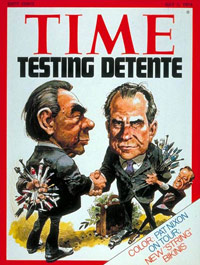
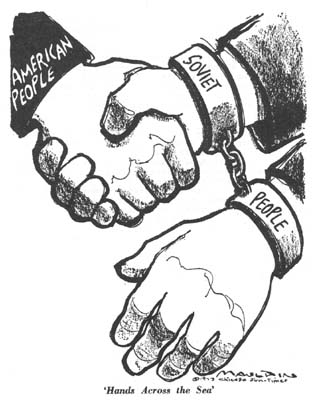
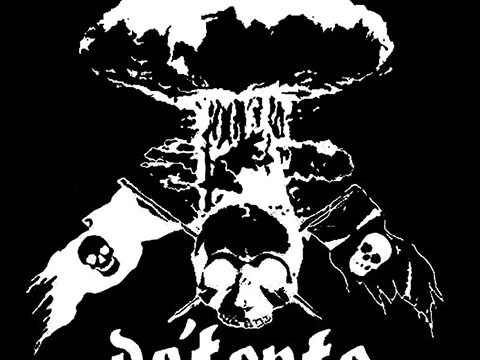
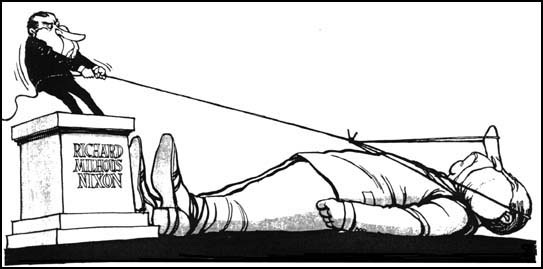
4 - 4
<
>